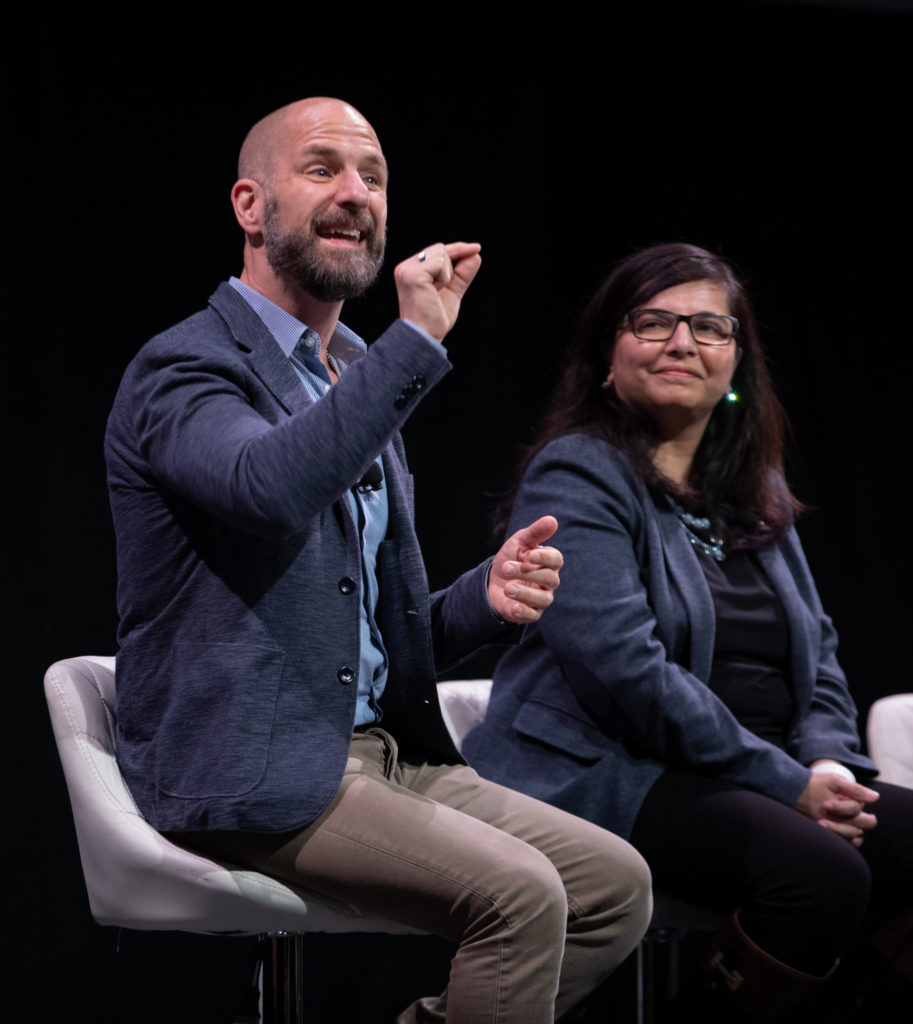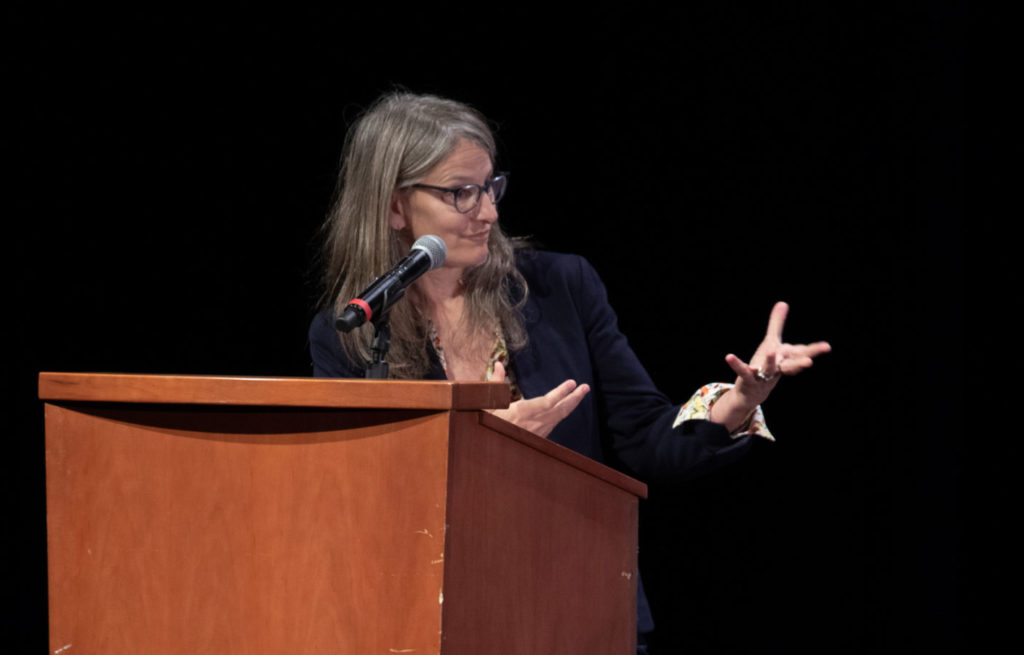Helping Workers Find Strengths to Take on New Roles


“It’s a fascinating moment to be talking about work with so much disruption, so many fast-changing cultural conversations about race and gender equity,” said Esther Kaplan, deputy editor of investigations at Insider. “A tight labor market, rise in unionization, a shift to remote and hybrid work, a major rebalancing of work and life. So, within all that, how do we make the workplace a meaningful site for investment, learning, and growth?”
Kaplan moderated a panel titled, “How Employers Can Help Workers Find Strengths to Take on New Roles” at From Day One’s San Francisco conference in September. Her question sparked a discussion on how and why companies need to continue developing their workforce in order to keep it.
“Despite the tumult of the past few years, employee growth–development, learning opportunities–remains one of the most stable drivers of engagement and retention,” said Molly Delaney, head of people analytics at X, the Moonshot Factory, an innovation lab that’s a division of Google. “This is true regardless of markets, industries, different employee types.”
The top reason employees leave their jobs is lack of career development and advancement, according to recent McKinsey research. “If you want to compete for and retain your best talent, then you absolutely need to invest in learning and development,” said Tom Griffiths, CEO and co-founder of Hone, a leadership-training platform. “Not just for the first-order benefit of people getting better at their jobs, but for the second-order effects of people wanting to stay longer.”
A generational shift is influencing workplace culture as well. It’s no longer the norm to stay at one job on a linear track for 30 years. Millennials and Gen Z new hires want to be cared for and developed. At the same time, business is changing rapidly when it comes to speed, agility, and adaptability.
“We need to make sure that our employees are not just comfortable where they’re working, but also are getting ready to manage those changes,” said Shveta Miglani, PhD, head of global learning and development at Micron Technology, a semiconductor manufacturer. “How do we help them to navigate through and make sure they’re building that muscle continuously to learn?” Miglani advocated for upskilling or reskilling, which encourages talent mobility where people can move within and even across different functions.
“We really need to invest in giving people time,” said Evan Graner, VP of employee experience at Edelman, a global communications firm. “We are time-starved, and we continue to be time-starved.”

“We like to use busyness as an excuse,” said Tyana Owings, head of people at Cloverleaf, an automated coaching platform. “If you want to know what somebody’s priority is, look at their checkbook and planner. Make time for the things that are important. Where are your obstacles and how can I help you overcome those obstacles to make time for your own development?”
“Not every training and development opportunity is created equal,” said Delaney. “The best learning and development programs are not programs at all. They are highly intentional efforts to match the types of skills and abilities that an employee wants to learn, with the types of skills and abilities that a team needs within the organization to meet their strategic goals.”
That approach avoids many of the common pitfalls of training by allowing an employee already in a role to continue doing the work and learning skills as they go. It’s highly feedback-driven and an effective use of the employee’s time, which is in high demand and low supply these days.
“It’s a supply-chain problem,” said Graner, who cited an Edelman report with Microsoft from earlier this year. “Not only do you have 152% more meetings on your calendar, you spend 252% more time in meetings. You receive one-third more instant messages than you used to, and you respond to half of those in less than five minutes. So not only is the workday 13% longer [by] 46 minutes, it’s more intense.”
“We’re trying to shove new business into the way we did old schedules,” said Owings. “So, we always did this on Wednesdays, we’ve done it at noon for the past five years. Maybe that’s not the best thing anymore. Sometimes we have to step back and think more strategically. Is the way that we’re organizing our work week accommodating 2022 business needs or are we still accommodating 2017 business needs?”
Organizations must create the infrastructure to allocate growth and development opportunities. For example, employers can encourage “no meetings Fridays,” so that employees can catch up on email, attend workshops, or do brown bag sessions with teams. “We started that at the organizational level,” said Miglani, “and it’s really helping us because now people are looking forward to it and they are making time for it.”

“Where we’ve seen companies really succeed in driving a learning culture is when it comes from the top down,” said Griffiths. Leaders must communicate early on and very experientially how much they value learning and development.
“We need to think about the modalities in which we’re training,” said Delaney. “Democratizing learning and development, which should become easier to some degree now that we’re remote or virtual, and making those opportunities available through multiple modalities. We need to not only refresh how we’re doing training but specifically what we’re training on and how we’re equipping our workforce for a continually hybrid or remote environment.”
“I have a 13 year old who keeps arguing with us, ‘Why do I need to learn math every single day?’” said Miglani, who’d give her son tasks to spend $10 at the store. “The application of what you are learning is the most important thing.”
Moderator Kaplan summarized the insightful discussion: “Don’t get stuck in current job descriptions or current ways of structuring the work week. Try to align learning with work assignments. Create psychological safety in which people can say what they want and need to learn, and don’'t approach it as a checkbox thing.”
Samantha Campos is a freelance journalist who’s written for regional publications in Hawaii and California, with forays into medical cannabis and food justice nonprofits. She currently resides in Oakland, California.
The From Day One Newsletter is a monthly roundup of articles, features, and editorials on innovative ways for companies to forge stronger relationships with their employees, customers, and communities.